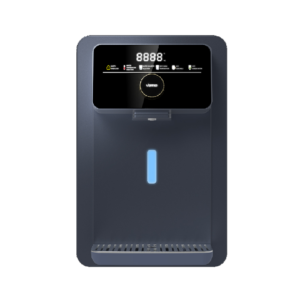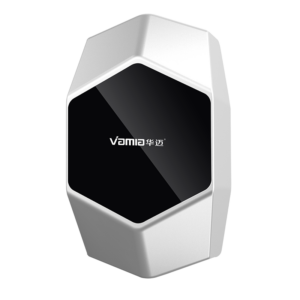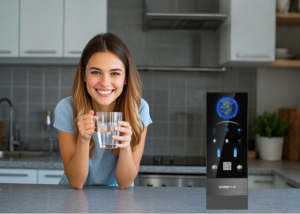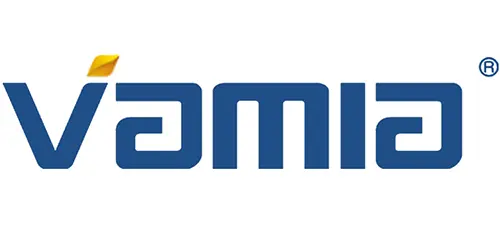What Are The Factors Affecting The Washing Cycle Of The Filter Element Of Reverse Osmosis Water Purifier?
Influent quality
Impurity content: If the sediment, rust, colloids and other large particles in the
raw water are more impurities, it will quickly clog the filter element and need to be washed frequently.
For example, in areas where surface water is the source of water, the water quality is cloudy during the flood period,
and impurities increase greatly, and it may be necessary to wash every day.
Organic matter concentration: dissolved organic matter in water, such as humic acid, protein,
etc., is easily adsorbed on the surface of the filter element, resulting in
a decrease in flux and poor water quality, and the washing cycle should be shortened when the content of organic matter is high.
Microbial quantity: microbial breeding and reproduction on the surface of the filter element will form a biofilm,
increase water flow resistance, reduce filtration efficiency, and may produce metabolites to pollute water quality.
Water sources with more microorganisms need to be washed more frequently.
Hardness level: raw water hardness is high, calcium and magnesium plasma is easy to scale on the surface of the filter element,
affecting the flux and separation performance, and the flushing cycle of reverse osmosis water purifier in hard water areas should be shortened accordingly.

System operating parameter
Operating pressure: Long-term operation beyond the design pressure will make the reverse osmosis membrane subjected
to excessive physical extrusion, structural damage, resulting in reduced filtration performance,
but also may make it easier for impurities to penetrate the filter element, in this case, it is necessary
to appropriately increase the number of washing, and timely adjust the operating pressure to the normal range.
Flow rate: Too high flow rate will have adverse effects on the filter, such as washing, speeding
up the filter wear and impurities penetration, so that the washing cycle is shortened, should ensure
that the flow in the equipment specified normal range of operation.
Recovery rate setting: the recovery rate is too high, the concentration of salt on the concentrated water side is too high,
easy to produce concentration polarization, reduce the membrane flux, accelerate membrane pollution and scaling,
at this time, it is necessary to wash the filter element more frequently to ensure its performance,
it is generally recommended that the recovery rate of reverse osmosis equipment is controlled at about 70%-80%.
Maintenance status
Cleaning frequency and effect: Regular effective cleaning of reverse osmosis membrane can remove
pollutants and extend service life, cleaning is not timely or improper method, pollutant
accumulation will accelerate the performance decline, and shorten the flushing cycle.
Pretreatment system maintenance: a good pretreatment system can remove most of the impurities
in the raw water and reduce the pollution pressure of the reverse osmosis membrane.
Improper maintenance of the pretreatment equipment, such as the filtration medium
of the multi-media filter has not been replaced for a long time, will make a large number
of impurities enter the reverse osmosis membrane system, resulting in shorter replacement cycle of the membrane and shorter flushing cycle.
Frequency of use and water consumption

The frequency of use: the family population is large, the water consumption is large, the water purifier is used frequently, the filter element burden is heavy,
the accumulation of impurities is fast, the washing cycle should be shortened, such as the reverse
osmosis water purifier in public places such as offices and schools, due to the large number of users, it needs to be washed several times a day or a week.
Continuous running time: Continuous running for a long time without stopping will make the filter element always in a working state,
accelerate fatigue and pollution, for places that need continuous water supply, it is necessary to reasonably arrange the flushing time and increase the flushing frequency.
Environmental factor
Temperature change: too high or too low temperature will affect the performance and life of the reverse osmosis membrane,
Water Purifier Factory, Water Purifier For Home, Water Purifier Machine, Water Purifier, Water Filter Purifier System
and then affect the flushing cycle, high temperature will accelerate microbial reproduction, chemical reaction rate increase,
resulting in increased membrane pollution; Low temperature increases the viscosity of water, reduces the membrane flux,
and generally the appropriate operating temperature is between 5℃ and 35℃.
Air quality: If the installation of ambient air quality is poor, dust and other pollutants are easy to enter the water purifier system,
attached to the surface of the filter element, affecting the filtration effect, shorten the flushing cycle, the water purifier should be installed in a clean, well-ventilated location.
Filter material and quality
Material characteristics: Different materials of reverse osmosis filter element, its pollution resistance, chemical stability,
etc., such as polyamide composite membrane has good hydrophilicity, relatively strong anti-pollution ability,
flushing cycle can be properly extended; However, the chemical stability of cellulose acetate film is slightly poor,
and it is easily affected by acid and alkali substances, so more attention should be paid to washing and maintenance.
Quality difference: the high-quality filter element has uniform aperture, stable structure, can more effectively block impurities,
long service life, and relatively long flushing cycle; Poor quality filters may deteriorate in a short period of time and require frequent flushing or replacement.
What Are The Factors Affecting The Washing Cycle Of The Filter Element Of Reverse Osmosis Water Purifier?

